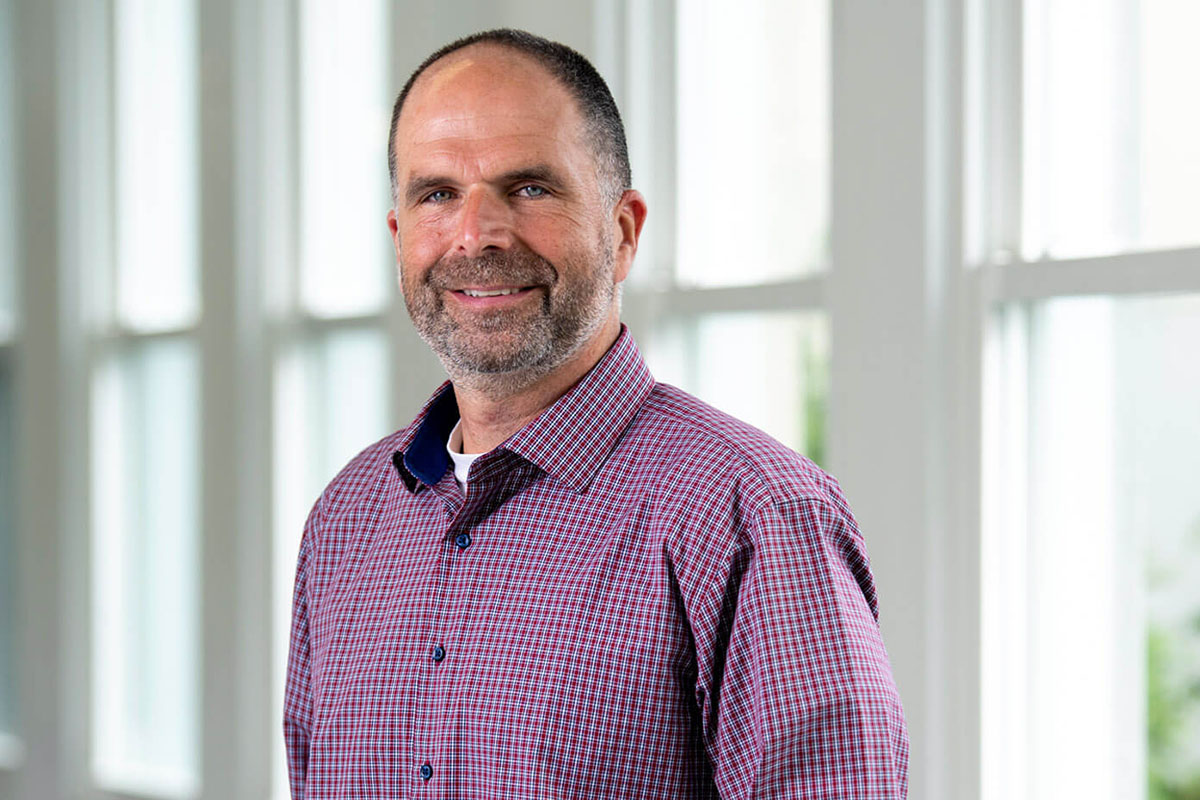
John Cangelosi: Bangor High School science teacher, UMaine grad honored with Presidential Award for Excellence in Science Teaching
Bangor High School science teacher and University of Maine alumnus John Cangelosi (’96, ’12G) is one of 107 educators nationwide to receive a 2020 Presidential Award for Excellence in Mathematics and Science Teaching (PAEMST).
Administered by the National Science Foundation on behalf of the White House, the awards are considered the highest honor bestowed by the federal government for K–12 science, technology, engineering and mathematics teaching. Awardees are viewed as leaders in the field of STEM education, and models for their colleagues. The recognition also comes with a $10,000 prize, and in a typical year, a trip to Washington, D.C. for a series of events and professional development opportunities.
“I feel very lucky to be chosen. It’s a great honor,” Cangelosi says, humbly.
But he adds that seeing his students succeed in the classroom and beyond is the biggest honor of his teaching career.
“One of the nicest things to hear is that when they go to college, they feel like they’re totally prepared because of what they learned in high school,” Cangelosi says.
And he credits the University of Maine for playing no small part in his own educational journey.
Growing up in Tarrytown, New York and Williamstown, Massachusetts, Cangelosi’s mother was a preschool teacher. But he admits that he wasn’t a very good student through high school.
In his early twenties, he did two years at a community college in Massachusetts. Then took time off to travel and work in the recreation industry in Maine and other states.
When his wife enrolled at UMaine to pursue a degree in nursing, Cangelosi says he decided it was time for him to go back to school as well. In 1996, he earned a bachelor of science in geological sciences (now Earth sciences).
“The culture and the environment in the geological sciences department were very welcoming,” Cangelosi says of why he chose UMaine.
“You have instructors and researchers who operate at a high level,” he adds. “And small classes. To me it almost felt like I was getting an individualized education.”
After completing his degree, Cangelosi worked as a laboratory manager at UMaine’s Sawyer Environmental Chemistry Lab (now the Sawyer Water Research Lab), where he helped facilitate environmental research for students, faculty and state agencies.
During his 10 years at the lab, he again turned to UMaine, taking classes through the College of Education and Human Development to earn his teaching certification.
“I really enjoyed interacting with students at the lab,” Cangelosi says. “And even when I was working in the recreation industry, I always had it in the back of my mind that I would one day enjoy teaching.”
In 2008, Cangelosi started teaching at Bangor High School, still the only place he’s taught full-time. He ultimately earned a M.Ed. in science education at UMaine. Although his path to teaching was unique, he says he always felt welcomed by his instructors and fellow graduate students.
“I remember one of the last graduate classes I took in education, everyone was going around the room and talking about how long they’d been teaching, and I looked at my watch and said, ‘About six hours,’” he jokes.
“I’d say the same things that attracted me to UMaine for my bachelor’s degree made me want to do my master’s there,” he says. “You have small classes, and knowledgeable instructors, who really give you the tools to be prepared for teaching high school.”
Cangelosi has continued to stay connected to UMaine during his teaching career, benefiting both him and his students, he says.
For the past six years, he has been an instructor and facilitator in UMaine’s NSF-funded Stormwater Management Research Team (SMART) program. Participants collect environmental data and work on solutions to the problem of storm-water pollution in their communities. The summer institute encourages attendance from underrepresented groups in STEM fields.
At Bangor High School, Cangelosi teaches in a multiyear STEM program, where students work on projects over the course of their high school careers. For several years, his students took part in the Maine Wind Blade Challenge, a team-based competition hosted by UMaine, where high school students try to design and build blades for wind energy systems. In fact, in his application for the Presidential Award for Excellence in Science Teaching, Cangelosi wrote about teaching wind energy, including working with students to make models of their wind blades using 3D printing.
During his first year advising students in the wind blade challenge, Cangelosi says the team did “horribly.” But in subsequent years the students did more research, consulting with experts at UMaine’s Advanced Structures and Composites Center, and others who work in Maine’s wind energy industry.
“And in 2016, our team of three female STEM students won!” he says. “In other years we got close, second and third place.”
“That felt really good,” he says. “To see students dive into the research, and learn the science behind what they are working on is the biggest honor for me.”
Contact: Casey Kelly, casey.kelly@maine.edu
